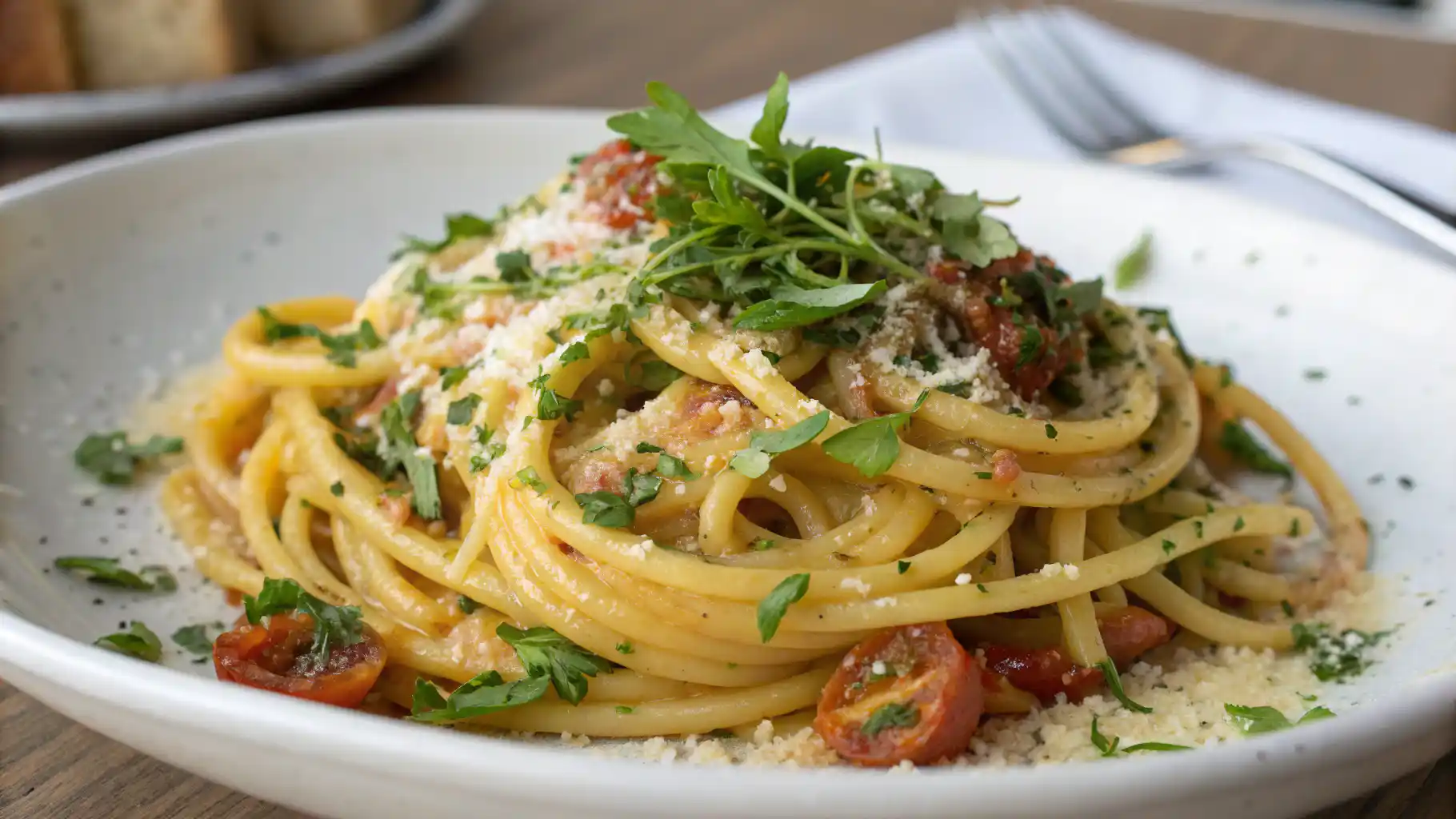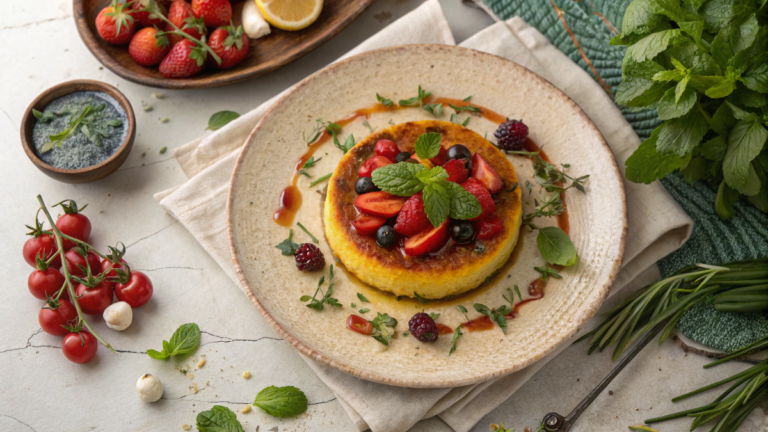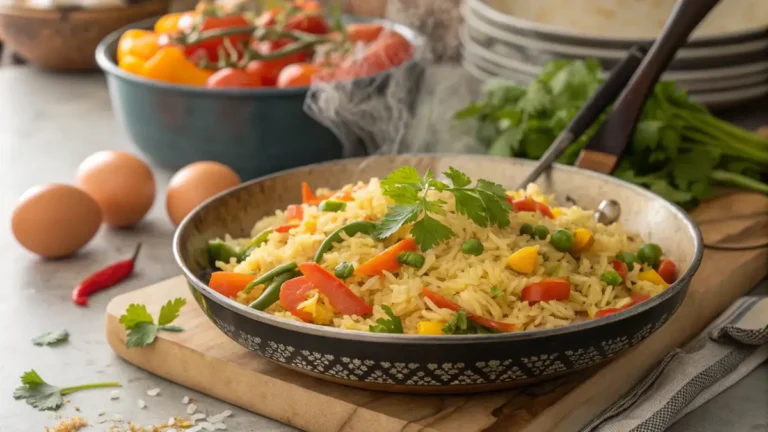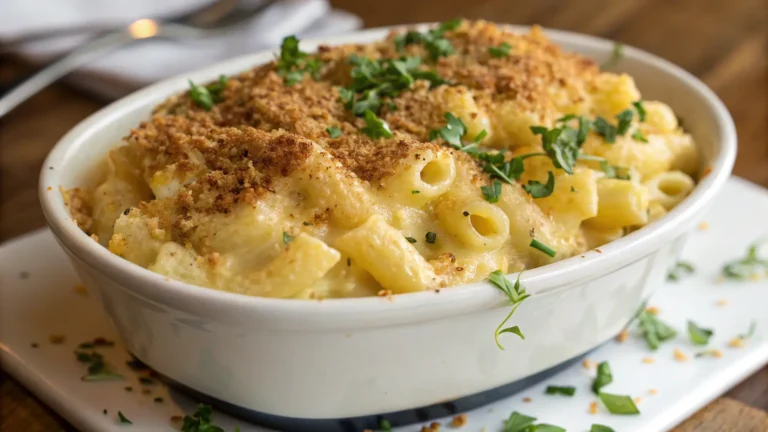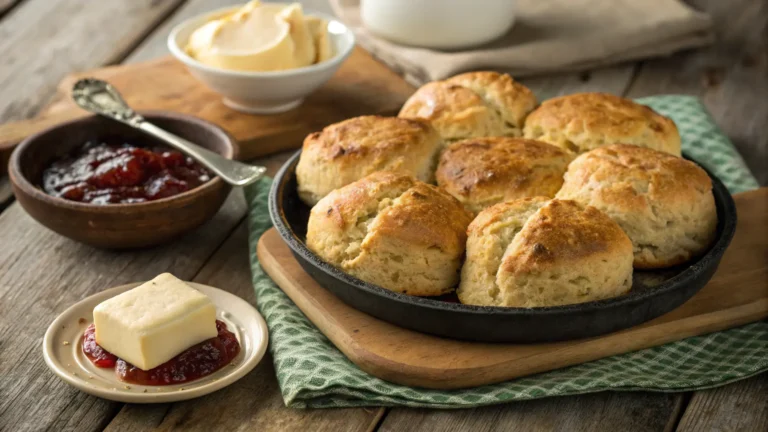Amazing bucatini pasta now jaw-dropping taste
Have you ever tasted a pasta that feels like a warm hug on a plate? Bucatini pasta is just that! This unique pasta, with its hollow center, not only holds sauces beautifully but also offers a delightful al dente texture that elevates any dish. Whether you’re whipping up a comforting weeknight meal or impressing guests at a dinner party, bucatini pasta is a versatile choice that never disappoints. Moreover, it’s packed with nutritional value, including dietary fiber and energy-boosting carbohydrates, making it a satisfying option for everyone. So, let’s dive into the world of bucatini pasta and discover how to create a jaw-dropping dish that will leave your taste buds dancing!
Table of Contents
Key Benefits
If you’re looking to elevate your pasta game, bucatini pasta is a fantastic choice! This unique pasta shape, resembling a thick spaghetti with a hollow center, offers a delightful texture that holds sauces beautifully. Here are some key benefits that make bucatini a must-try:
- Unique Texture: Bucatini’s hollow center allows it to capture sauces, ensuring every bite is packed with flavor. This makes it perfect for rich, hearty sauces.
- Al Dente Perfection: When cooked properly, bucatini achieves that ideal al dente texture, providing a satisfying chew that enhances your dining experience.
- Versatile Dish: Bucatini can be used in a variety of recipes, from classic carbonara to vibrant vegetable dishes. This versatility means you can experiment with different flavors and ingredients.
- Nutritional Value: Bucatini pasta is a source of carbohydrates, providing energy for your day. Additionally, it often contains dietary fiber, which is beneficial for digestion.
- Comfort Food: There’s something inherently comforting about a warm bowl of bucatini pasta. It’s a dish that brings people together, making it perfect for family dinners or cozy nights in.
Incorporating bucatini pasta into your meals not only enhances the flavor but also adds a touch of authenticity to your Italian cuisine. So, whether you’re whipping up a quick weeknight dinner or planning a special occasion, bucatini is sure to impress!
Ingredients
Creating a delightful bucatini pasta dish starts with selecting the right ingredients. Here’s what you’ll need:
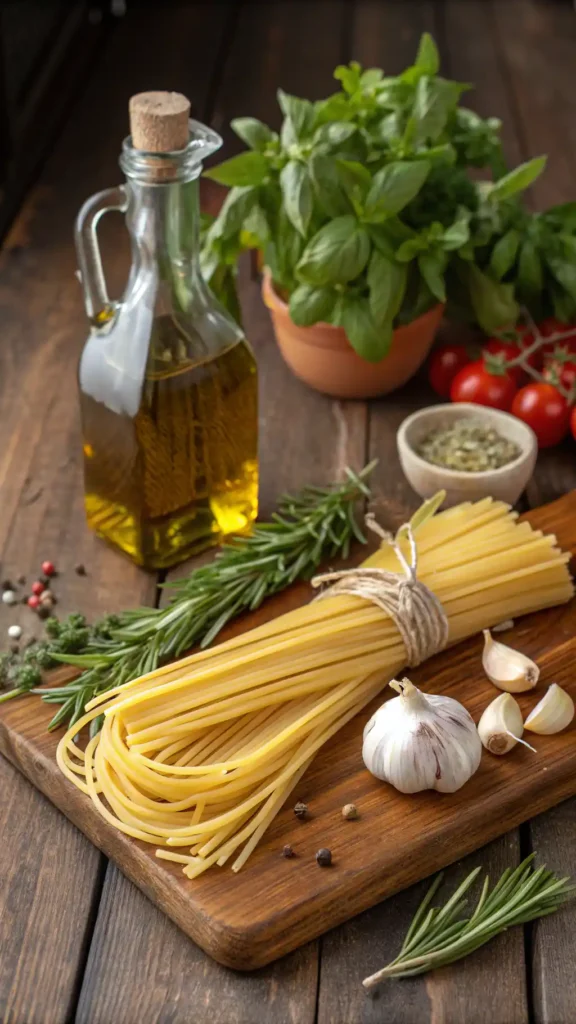
- Fresh Bucatini: Look for high-quality, fresh bucatini pasta. Its unique texture allows it to hold sauces beautifully, making every bite a pleasure.
- Extra Virgin Olive Oil: This is essential for flavor. Choose a good quality olive oil, as it enhances the overall taste of your dish.
- Garlic: Fresh garlic adds aromatic depth. You can adjust the amount based on your preference, but don’t skimp on this flavor booster!
- Parmesan Cheese: Freshly grated Parmesan is a must. It melts into the pasta, creating a creamy, savory finish.
- Fresh Herbs: Basil or parsley works wonders. They not only add color but also a burst of freshness that elevates the dish.
- Sea Salt: Use this for seasoning the pasta water. It’s crucial for enhancing the flavor of the bucatini.
When selecting your ingredients, freshness is key. For instance, if you can find artisanal bucatini, it will make a noticeable difference in texture and taste. Additionally, if you’re in a pinch, you can substitute with another pasta type, but keep in mind that the unique shape of bucatini is what makes it special. Also, consider using homemade sauces whenever possible, as they bring a personal touch to your meal.
Overall, the right ingredients will set the foundation for a truly amazing bucatini pasta dish. So, gather your ingredients, and let’s get cooking!
How to Make Bucatini Pasta
Making bucatini pasta is a delightful experience that brings the essence of Italian cuisine right to your kitchen. Follow these simple steps to achieve that perfect al dente texture and a dish bursting with flavor.
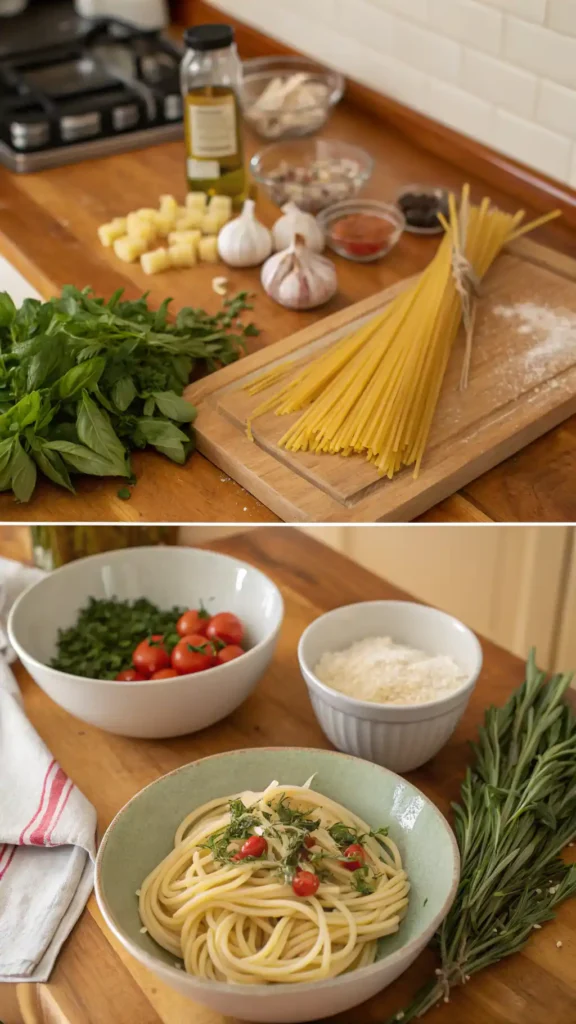
- Gather Your Ingredients: Start by collecting fresh bucatini, extra virgin olive oil, garlic, sea salt, and your choice of sauce, like marinara or carbonara. Using high-quality ingredients is crucial for a delicious outcome.
- Boil the Water: Fill a large pot with water and add a generous pinch of sea salt. Bring it to a rolling boil. Remember, salty water enhances the pasta’s flavor, so don’t skip this step!
- Add the Bucatini: Once the water is boiling, add the bucatini pasta. Stir it gently to prevent sticking. Cook according to the package instructions, usually around 9-11 minutes, for that perfect al dente texture.
- Prepare the Sauce: While the pasta cooks, heat olive oil in a pan over medium heat. Add minced garlic and sauté until fragrant, which should take about 1-2 minutes. Be careful not to burn the garlic, as it can turn bitter.
- Reserve Pasta Water: Before draining the pasta, reserve about a cup of the cooking water. This starchy water is a secret weapon for achieving a silky sauce.
- Drain and Toss: Drain the bucatini and immediately add it to the pan with the garlic. Toss the pasta in the oil to coat it evenly. If the pasta seems dry, add a splash of the reserved cooking water to help the sauce adhere.
- Infuse Flavor: If you’re using a sauce, now is the time to add it. Toss everything together, allowing the bucatini to absorb the flavors. This step is essential for a truly immersive taste experience.
- Serve and Garnish: Plate your bucatini pasta and finish with freshly grated Parmesan cheese and a sprinkle of herbs like basil or parsley. This not only adds flavor but also makes for a beautiful presentation.
And there you have it! Your homemade bucatini pasta is ready to be enjoyed. Remember, the key to a great dish lies in the details, so take your time and savor the process. Buon appetito!
Pro Tips, Variations, and Common Problems
Cooking bucatini pasta can be a delightful experience, but it does come with its own set of challenges. Here are some pro tips and variations to help you achieve the perfect dish every time!
Pro Tips for Perfect Bucatini
– Cook Al Dente: Always aim for al dente perfection. This means cooking your bucatini pasta for about 2 minutes less than the package instructions. This way, it retains a slight bite, which is essential for texture.
– Salt Your Water: Don’t forget to generously salt your boiling water. This is your chance to season the pasta itself, enhancing the overall flavor of your dish.
– Reserve Pasta Water: Before draining, save a cup of the starchy cooking water. This can be added to your sauce later to help it cling to the bucatini beautifully.
Creative Variations
– Sauce Pairings: Bucatini pairs wonderfully with rich sauces like marinara, carbonara, or even a light garlic and olive oil sauce. For a twist, try it with a creamy pesto or a spicy arrabbiata sauce.
– Add Protein: Consider adding grilled chicken, shrimp, or sautéed mushrooms for a heartier meal. These additions not only enhance the dish but also make it more filling.
– Vegetarian Options: For a vegetarian delight, toss in seasonal vegetables like zucchini, bell peppers, or spinach. This not only adds color but also boosts nutritional value, The USDA MyPlate guide recommends including a variety of vegetables in meals for optimal nutrition, and bucatini is a tasty way to incorporate them.
Common Problems and Solutions
– Overcooking: If you find your bucatini pasta is mushy, it’s likely overcooked. To avoid this, set a timer and taste the pasta a minute or two before the recommended cooking time.
– Sticking Together: If your bucatini sticks together, it may be due to insufficient water or not stirring enough during cooking. Ensure you use a large pot with plenty of water and stir occasionally.
– Lack of Flavor: If your dish tastes bland, it might need more seasoning. Always taste your sauce and adjust with salt, pepper, or fresh herbs before serving.
By following these tips, you’ll not only enhance your bucatini pasta dish but also enjoy the cooking process. Remember, practice makes perfect, so don’t hesitate to experiment and find what works best for you!
Serving Suggestions
When it comes to serving bucatini pasta, presentation is key. Not only does it enhance the dining experience, but it also makes your dish look as delicious as it tastes. Here are some engaging serving suggestions that will impress your guests and elevate your meal.
Plating Ideas
To showcase the unique texture of bucatini pasta, consider these plating techniques:
- Twirl a generous portion of bucatini onto a fork and place it artfully in the center of a shallow bowl. This creates a beautiful focal point.
- Drizzle a bit of extra virgin olive oil around the pasta for a glossy finish. Additionally, sprinkle freshly grated Parmesan cheese on top for an inviting touch.
- Garnish with fresh herbs like basil or parsley. This not only adds color but also enhances the aroma of your dish.
Side Dish Pairings
Pairing your bucatini pasta with complementary sides can elevate the meal:
- Serve with a crisp green salad tossed in a light vinaigrette. This adds a refreshing contrast to the richness of the pasta.
- Roasted seasonal vegetables, such as zucchini or bell peppers, can add both flavor and nutrition. Moreover, they bring vibrant colors to your plate.
- For a heartier option, consider garlic bread or focaccia. These are perfect for soaking up any leftover sauce.
Creative Serving Options
Depending on the occasion, you can serve bucatini pasta in various styles:
- For a casual family dinner, serve the pasta in a large bowl, allowing everyone to help themselves. This creates a warm, inviting atmosphere.
- If you’re hosting a more elegant gathering, plate individual servings with a side of wine, such as Chianti. This adds a touch of sophistication.
- For a fun twist, consider a pasta bar where guests can customize their bucatini with different sauces and toppings. This interactive element is sure to delight!
Presentation Tips
Finally, here are some additional tips to make your bucatini pasta shine:
- Use colorful plates to contrast with the pasta. White dishes can make the vibrant colors of your ingredients pop.
- Serve with a wedge of lemon on the side. This not only looks appealing but also allows guests to add a zesty kick if they desire.
- Lastly, don’t forget to take a moment to admire your creation before serving. After all, a beautifully presented dish is a feast for the eyes!
With these serving suggestions, your bucatini pasta will not only taste amazing but also look jaw-droppingly beautiful. Enjoy the compliments that come your way!
Preserving and Reheating
When it comes to enjoying your amazing bucatini pasta later, proper storage and reheating are key to maintaining that jaw-dropping taste. First, let’s talk about how to store your leftover bucatini pasta. If you plan to eat it within a few days, refrigerate it in an airtight container. This way, it will stay fresh for up to 3 to 5 days. However, if you want to keep it for a longer period, freezing is your best bet. Bucatini pasta can be frozen for up to 2 months. Just make sure to use a vacuum-sealed bag or a freezer-safe container to prevent freezer burn. Additionally, always label your containers with the date to keep track of freshness.
Food safety is crucial, so remember to let your pasta cool down to room temperature before storing it. This helps prevent bacterial growth. Also, avoid leaving it out at room temperature for more than two hours. By following these simple tips, you can ensure your bucatini pasta remains delicious and safe to eat.
Reheating Methods
Now, let’s dive into the best ways to reheat your bucatini pasta without sacrificing its delightful texture and flavor. One of the most effective methods is using the stovetop. Start by adding a splash of water or broth to a skillet over medium heat. Then, add your bucatini pasta and gently toss it, allowing it to heat through. This method helps to keep the pasta moist and prevents it from drying out.
If you prefer the oven, preheat it to 350°F (175°C). Place your bucatini in an oven-safe dish, add a bit of olive oil or sauce to keep it moist, and cover it with foil. Bake for about 15-20 minutes, checking occasionally to ensure it’s heated evenly. Alternatively, if you’re in a hurry, the microwave can work too. Just place your bucatini in a microwave-safe bowl, add a splash of water, and cover it with a damp paper towel. Heat it in 30-second intervals, stirring in between, until it’s warmed through.
Lastly, if you have an air fryer, you can reheat your bucatini pasta there as well. Set it to 300°F (150°C) and heat for about 5-7 minutes, shaking the basket halfway through. This method gives your pasta a lovely texture while ensuring it’s heated evenly. No matter which method you choose, adding a little moisture is essential to refresh your dish. With these tips, your bucatini pasta will taste just as amazing as when it was first made!
Conclusion
As we wrap up this delightful journey of making bucatini pasta, let’s take a moment to appreciate the simplicity and versatility of this dish. With just a few key ingredients—fresh bucatini, olive oil, garlic, and perhaps a sprinkle of Parmesan—you can create a meal that is not only comforting but also bursting with flavor. Remember, the key techniques involve boiling the pasta to al dente perfection and tossing it with your favorite sauce to infuse every strand with deliciousness. So, whether you choose a classic marinara or a creamy carbonara, you’re sure to impress yourself and anyone you share this meal with.
Now, I encourage you to dive into this culinary adventure! Don’t hesitate to share your results or ask any questions you might have. Cooking is all about exploration, so feel free to experiment with different sauce pairings or add seasonal vegetables to make this dish your own. Bucatini pasta is a fantastic canvas for your creativity, and I assure you, the process is just as enjoyable as the end result. So, gather your ingredients, roll up your sleeves, and let the magic happen in your kitchen. Happy cooking!
Hungry for more delicious creations? Browse our site for more recipes and endless inspiration to spark your next culinary adventure!
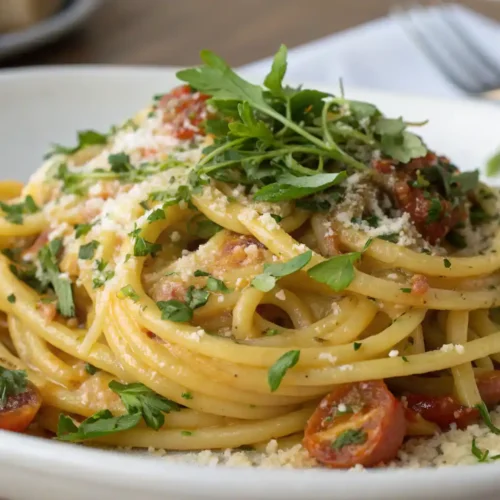
bucatini pasta
Equipment
- 1 Large Pot For boiling pasta.
- 1 Pan For preparing the sauce.
Ingredients
Pasta
- 400 grams Fresh Bucatini High-quality, fresh bucatini pasta.
Oil
- 3 tablespoons Extra Virgin Olive Oil Good quality olive oil for flavor.
Flavorings
- 3 cloves Garlic Fresh garlic, minced.
- 100 grams Parmesan Cheese Freshly grated for serving.
Herbs
- 1 bunch Fresh Herbs Basil or parsley for garnish.
Seasoning
- to taste Sea Salt For seasoning the pasta water.
Instructions
Preparation
- Gather your ingredients: fresh bucatini, extra virgin olive oil, garlic, sea salt, and your choice of sauce.
Boiling
- Fill a large pot with water, add sea salt, and bring to a rolling boil.
Cooking Pasta
- Add the bucatini to the boiling water and cook according to package instructions (9-11 minutes).
Sauce Preparation
- While the pasta cooks, heat olive oil in a pan over medium heat, add minced garlic, and sauté until fragrant (1-2 minutes).
Reserve Pasta Water
- Before draining, reserve about a cup of the cooking water.
Combine
- Drain the bucatini, add it to the pan with garlic, and toss to coat. Add reserved pasta water if needed.
Final Touch
- Add your sauce, toss everything together, and serve with freshly grated Parmesan and herbs.
Notes
| Calories | Fat | Protein | Carbs |
|---|---|---|---|
| 450 | 15g | 12g | 65g |
Frequently Asked Questions
Curious about bucatini pasta? You’re not alone! Here are some common questions and answers to help you enjoy this delicious dish even more.
What is bucatini pasta?
Bucatini pasta is a long, hollow noodle that resembles spaghetti but is thicker and has a unique texture. This shape allows it to hold sauces beautifully, making it a favorite in many Italian dishes.
How do I cook bucatini pasta perfectly?
To cook bucatini pasta, bring a large pot of salted water to a boil. Add the pasta and cook for about 9-11 minutes, or until it reaches al dente perfection. Remember to stir occasionally to prevent sticking. Afterward, reserve some pasta water before draining to help adjust your sauce’s consistency.
What sauces pair well with bucatini pasta?
Bucatini pasta is incredibly versatile. It pairs wonderfully with rich sauces like marinara, carbonara, or even a simple garlic and olive oil dressing. Additionally, you can toss it with fresh herbs and vegetables for a lighter option.
Can I use gluten-free alternatives for bucatini pasta?
Absolutely! There are gluten-free bucatini options available made from rice or corn. Just be sure to follow the cooking instructions on the package, as gluten-free pasta may require different cooking times.
How should I store leftover bucatini pasta?
To store leftover bucatini pasta, place it in an airtight container and refrigerate it. When reheating, use a microwave or stovetop with a splash of water to maintain its texture. This way, you can enjoy your delicious pasta without it becoming mushy!
